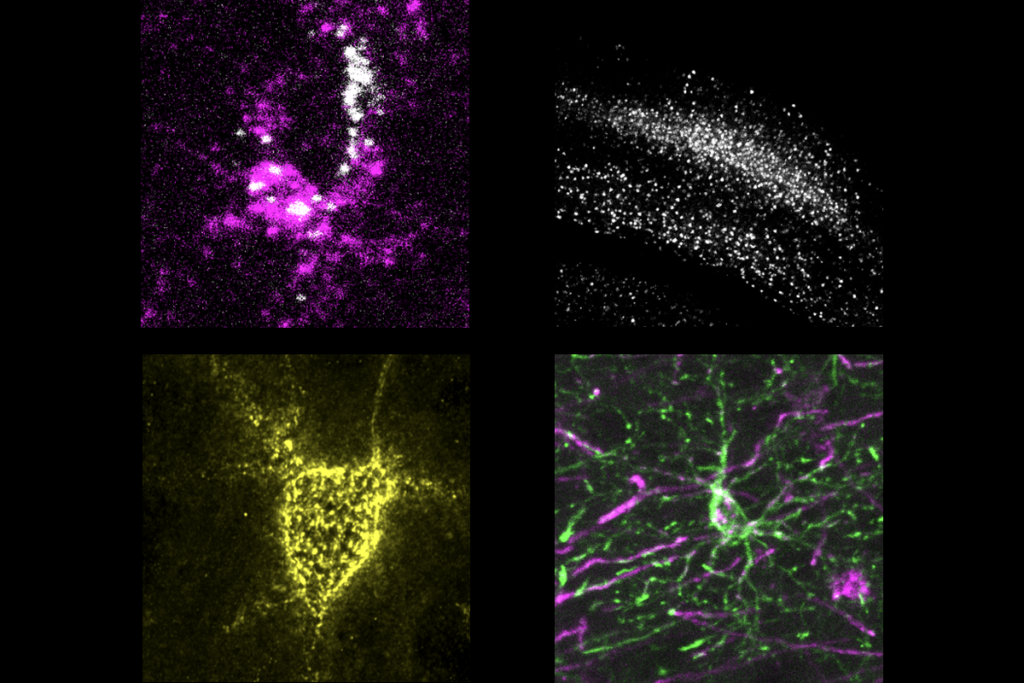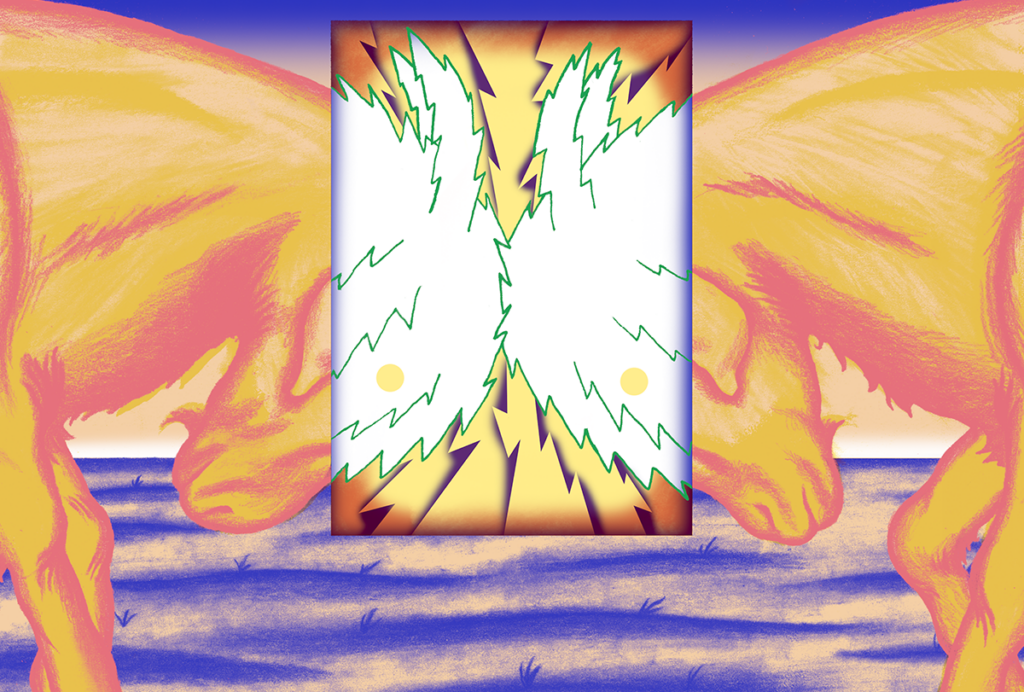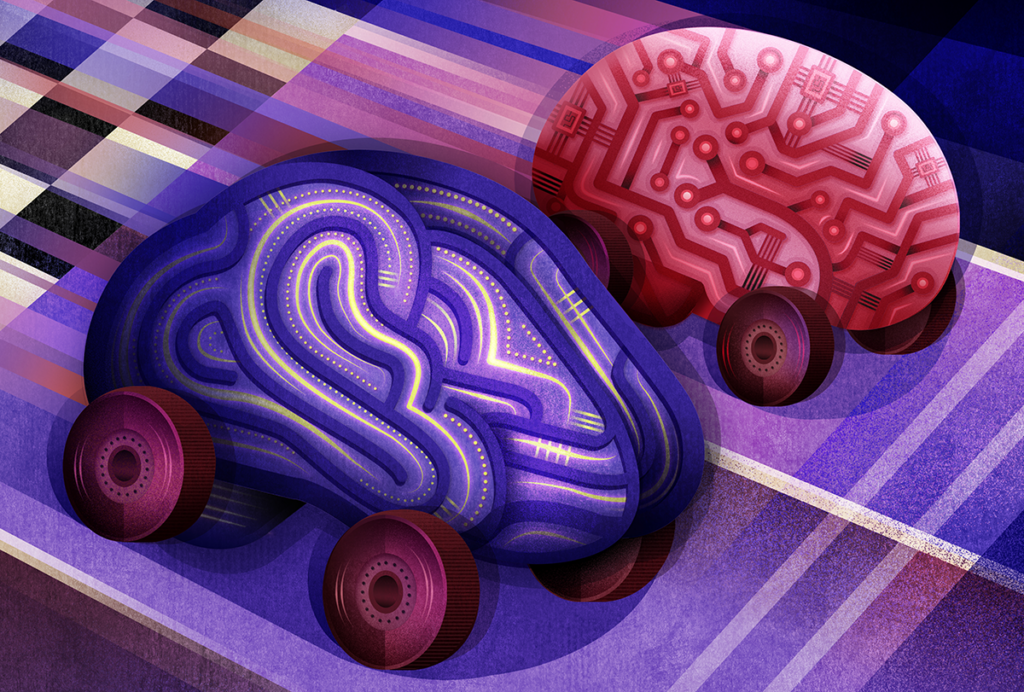An evolutionarily ancient part of the brain stirs when a face—or even a picture of a face—creeps into a macaque monkey’s peripheral view, according to a new study. Neurons there respond preferentially to pictures of faces over pictures of objects—and within 40 milliseconds after the images appear, the work shows.
The discovery helps bridge a long-standing gap in the field’s understanding of how people and other primates can rapidly sense the presence of a face well before the more sophisticated face-processing areas in the inferior temporal cortex take over about 40 to 60 milliseconds later—especially when that face appears in the corner of the eye, says lead researcher Richard Krauzlis, senior investigator at the National Institutes of Health’s National Eye Institute.
To recognize a face, we must look directly at it so that the central part of the retina, called the fovea, can perceive fine-grained facial details. Our peripheral vision, by contrast, has poor resolution. But “how do you get the face on the fovea to begin with?” Krauzlis says.
The answer, the new study suggests, may lie in the superior colliculus, an evolutionarily conserved brain structure responsible for eye movement. As soon as this area registers a face in the periphery, it likely helps to orient the eyes toward a face to enable a more detailed look, says study investigator Leor Katz, a staff scientist in Krauzlis’ lab.
It has long been suspected that face detection took some additional pathway before reaching the cortical areas involved in face processing, says Vlad Ayzenberg, incoming assistant professor of psychology and neuroscience at Temple University, who was not affiliated with the study. “There’s always been a processing asymmetry: We respond to seeing faces faster than the cortical areas process them.” The new study provides some of the strongest evidence for that theory, he adds.
T
he signals that power rapid face processing take an unexpected route to the superior colliculus, Krauzlis says.Visual information does not appear to travel directly from the retina to the superior colliculus, as the team originally hypothesized based on anatomical findings and physiological data. It must first travel to the lateral geniculate nucleus (LGN), the team posits, as macaques show no visual response to faces at all when this region is temporarily inactivated by an injection of the compound muscimol. And because there is no evidence that any signals travel directly from LGN to superior colliculus, signals must route through the primary visual cortex before reaching the superior colliculus.
This new circuit expands the existing understanding of face processing by demonstrating that this information is fed to even earlier nodes of visual processing than previously known, says Alexander Cohen, assistant professor of neurology at Harvard Medical School, who studies face recognition in people with autism and was not involved in the new study.
Such a finding launches a litany of future research questions to understand how this circuit develops and the function of the retinal projections that do go directly to the superior colliculus, if such signals even exist Katz says.
T
he quick response to peripheral faces in the superior colliculus may also explain why newborns are able to detect and orient toward faces months before they have developed neuronal responses in higher-order face-selective brain areas, such as the fusiform face area in people or face patches in monkeys, says study investigator Gongchen Yu, who is also a postdoctoral researcher in Krauzlis’ lab.But because this work was performed in adult monkeys, it leaves questions about how that processing develops, Ayzenberg says. “If it were in newborn monkeys, it would be a much bigger advance and would settle this developmental debate,” he says.
Understanding the development of face recognition in the superior colliculus, and how it ultimately sends those signals to the cortical face patches, could also help researchers better understand neurodevelopmental conditions in which face recognition is impaired, such as autism, Krauzlis suggests. He says he is curious to better understand what might break down in the superior colliculus’s early signaling of faces’ importance.
As for better understanding how brains process faces in the inferior temporal cortex, this changes very little, according to Cohen. He says it’s far too early to tell how this will aid autism research.
Ultimately, the work helps form a richer picture of why the primate brain evolved the way it did, says study investigator Yu. Whereas face processing was long considered a sophisticated skill, the fact that it involves the superior colliculus, which evolved in early mammals, underscores how important social interactions are to survival, he says.
“If [a baby human or baby monkey] are hungry, they’re thirsty, or if they have any need, they just look at their parents,” Yu says. “They don’t have language at that time. The only thing they can do is eye contact, face contact. Then they get help, and they survive.”




